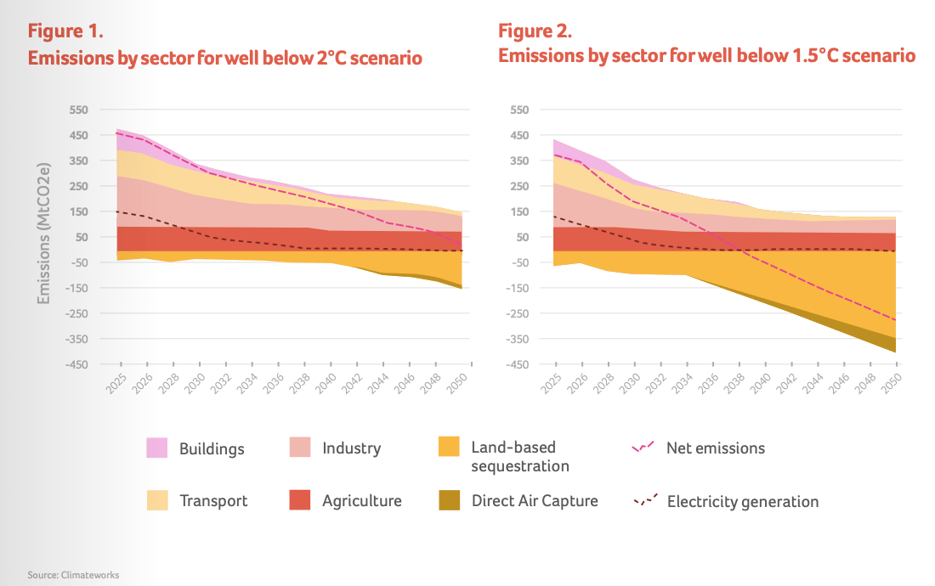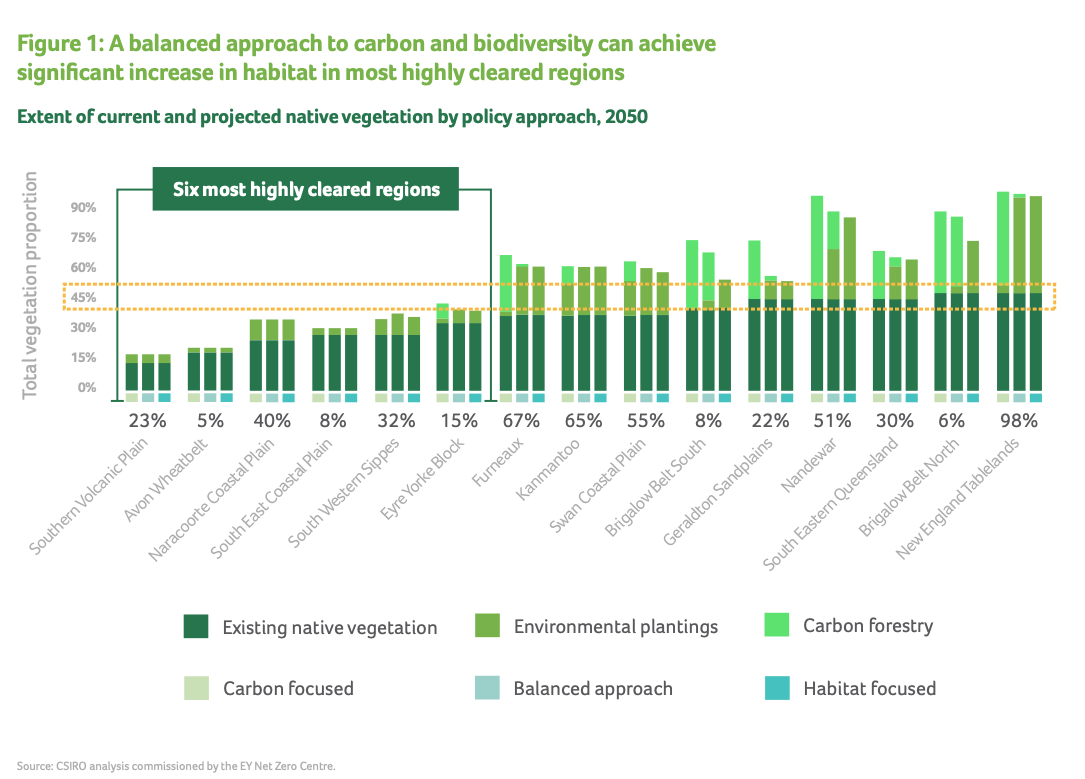A new report by the Carbon Market Institute (CMI) and Westpac has revealed that Australia is expected to become one of the largest carbon credit producers in the world, but to get there will require a massive shift in land use.
The report, which features submissions from market analyst S&P Global, policy advisory body Climateworks and former Treasury Secretary Dr Ken Henry, lays out a vision where Australia is a global leader in carbon sequestration and biodiversity “nature repair” projects. The imperative to act will be driven by the European Union and California mandating that companies report their carbon footprint, which will likely force them to seek out mitigation alternatives.
S&P Global, one of the world’s largest ratings and benchmarking agencies for financial institutions and governments, estimates that demand for Australian Carbon Credit Units (ACCUs) will leap to nine million units in 2024, with the potential to push the price of ACCUs to $40 or higher, compared to a current price of c~$35.
By 2031 demand will hit 31 million units, driven by large emitters seeking offsets.
READ MORE: Why the EU farm protests will lead to more incentives for farmers to decarbonise
Currently, the Clean Energy Regulator expects 19 million ACCUs to be issued in 2024, rising to 31 million in 2031. It expects that demand for ACCUs will exceed supply in 2028 with estimates that the price of an ACCU will rise to $60 or higher by 2030.
Climateworks, an independent policy thinktank within Monash University, has modelled ways to stay within the internationally agreed 1.5 degree warming target and found that by 2050 there would need to an eight-fold increase in the amount of carbon sequestered from land.
In a chapter titled “How farmers, land managers and regional communities can help us stay within 1.5°C”, the thinktank has cautioned against perverse incentives to repurpose farmland, calling for a “holistic, systems-level approach to balancing land use for agricultural production, carbon sequestration and nature repair”.
READ MORE: Why Australian ag is in global funds' sights

Whereas other industries are forecast to decrease their emissions, Climateworks has modelled no change in the net emissions from agriculture (see chart above) saying that under 1.5°C and 1.8°C scenarios “agricultural production will increase, creating fairly steady total emissions for the sector despite lower emissions intensity”.
READ MORE: Commbank carbon pilot 'a success'
Climateworks believes that for hard-to-abate industries like long-haul trucking, cement and aviation, carbon sequestration via tree planting and ecosystem restoration will be “indispensable”. That will require a robust policy framework.
“Agricultural and land use policies must be carefully crafted to avoid incentivising activities that lead to high emissions and instead encourage land use practices that optimise carbon sequestration, biodiversity, ecosystem services and appropriate agricultural production.”
READ MORE: WA Cropper: Woodside has been a good neighbour
Dr Ken Henry, the Treasury Secretary under Prime Ministers Howard, Rudd and Gillard, and chair of the Australian Climate and Biodiversity Foundation, has called on the Labor Government to deploy billions of dollars to seed a nature repair market.
The Australian Climate and Biodiversity Foundation’s (ACBF) submission to the CMI report has called for an “end to historical patterns of human development that have traded off environmental degradation in exchange for short-term commercial benefits,” and proposed there must be “large scale environmental repair … vital to safeguarding the living standards of future generations”.
The ACBF suggests a levy on ACCUs to create an incentive for large-scale sequestration projects like monoculture tree planting to also consider biodiversity outcomes.
It cites research that suggests prioritising environmental restoration carbon methods in a “balanced” approach can generate seven times as much native habitat by 2050 as a “carbon focused” (monocultural plantings) approach.
“Whilst this ‘balanced’ approach is estimated to result in a 20% reduction in carbon credit production from plantings by 2050, that is a modest price to pay for a large biodiversity benefit,” the ACBF writes.

To achieve their nature repair aim, the ACBF proposes that the government creates a “dedicated fund” to invest in “nature repair certificates” to stimulate demand from corporations and encourage innovation by land managers and project developers.
“Government kickstart funding for new markets is a model that has been successfully applied in the carbon markets, where the Queensland Land Restoration Fund and former federal Emissions Reduction Fund support the growth of the ACCU Scheme.”
Speaking to APlus News, Dr Henry said; “Given that 100s of millions of carbon credits need to be generated from the land to achieve net zero, a program where ACCUs also funded nature restoration would result in billions of dollars to repair what we have lost and safeguard the living standards of future generations.”
The ACBF highlighted modelling that showed greater biodiverse environmental plantings method uptake could deliver an almost 50% increase in habitat in some of Australia’s most heavily cleared bioregions, including North West NSW, Southern Queensland, and coastal WA, and reduce species extinction risks by 8%.
Subscribe to our weekly newsletter and monthly cattle, sheep, and machinery round-ups.